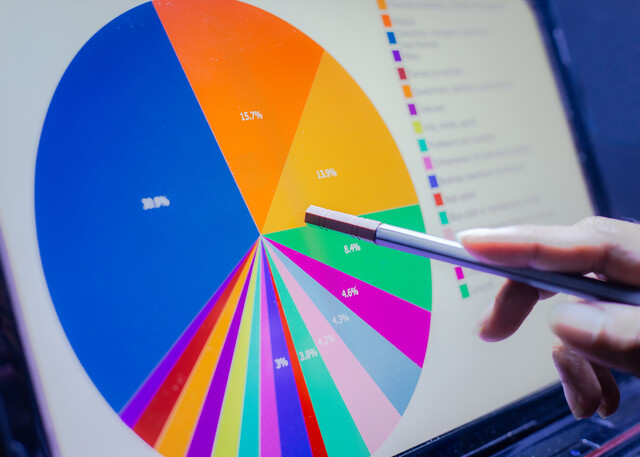We will look into some of the more troublesome areas of the lending industry.
This may be due to the fact that a key component of the economy is how fluid the nation's money supply is (both coming in and going out) and to make money, one often needs to borrow money. Yet, for a myriad of reasons, people frequently find themselves unable to repay their loans.
Because of the lure and the essentialness the banking industry represents, much focus, both from governmental and private sectors, is placed upon its activities. Thus, a great deal of attention is required to prevent abusive and/or debilitating practices which can creep into the lending process and cause problems among average consumers.
For instance, consider the trouble caused by loan officers green lighting loans for financially instable borrowers, lenders putting borrowers into overextended loans (leading to borrowers defaulting on their loans in record numbers), and/or predatory lending where lenders are offering unsuspecting borrowers with shady loan offers.
These examples can be grouped under one (or both) of two types of lending: sub-prime (which is legal) and predatory (which is illegal).
Sub-prime loans tend to carry higher interest rates to compensate for an individual's lack of creditworthiness. Though legal, sub-prime loans still present problems for lenders because lenders have not always fully taken into account a borrower's ability to repay the loan.
On the other hand, predatory lending practices, recently coming under close scrutiny, encompasses such unethical and unscrupulous practices as bait and switch where the lender presents the unsuspecting borrower with one type of loan and then signs them onto a completely different plan. They tend to target seniors or other demographic groups who may not be as capable of deciphering the fine print associated with a loan.
In the most basic sense, sub-prime lending (also known as B-paper, near-prime, non-prime, or second chance lending) is lending at a rate that is higher than the prime rate.
Sub-prime loans may or may not reflect the credit status of the borrower. Rather to offset the risk factor caused by the applicants' potentially poor credit history, lenders elect to charge higher rates.
In essence, the bank charges a cost for funding the loan (fee for money borrowed) along with an additional amount, called the "yield spread premium," which adjusts for the likelihood that the borrower may not repay the loan. This likelihood then is the probability that default will occur (also known as the default rate).
The big issue with sub-prime loans is that of the yield spread premium difference between the lowest interest rate for which a borrower qualifies and the end rate a lender charges. The larger the yield spread, the more money made by the loan officer.
While some feel that sub-prime loans take advantage of those with less than stellar financial backgrounds, others believe the practice of sub-prime lending makes it possible for people to get loans who otherwise would not have been able to do so.
And, for those with less than perfect credit, sub-prime loans give them a chance to repair their credit, given that they make their payments in full and on time.
Although sub-prime practices are often carefully watched to ensure fairness among consumers, predatory lending practices are viewed to be intolerable for knowingly and deliberately being out to sign up people to loans who do not understand what they are signing (mentally handicapped, seniors, foreigners) and/or could never possibly meet the terms of their loans.
And, on account of the hidden terms and conditions, as well as, excessively high fees, many borrowers of predatory loans are forced to default on their loans or have their property seized.
To avoid the previously mentioned negative scenarios, the Federal Reserve has regulations in place to help govern the lending industry.
To maintain some semblance of balance and fairness within the lending industry, the Truth in Lending (TIL) regulation requires lending agencies, credit sources, and other financial institutions to publicly fully disclose the terms and parameters of any financial transaction involving consumers. Hence, the interest rates, penalties for delinquencies, billing cycle periods, and more, must all be clearly stated in writing for the individual to see.
Aside from the Truth in Lending stipulation, the lending industry remains somewhat free of over-exhaustive regulations, a condition that has given rise to a great many debates.
This laissez-faire environment has now caused a range of issues stemming from opportunists seeking to capitalize on market demand, to those looking to take advantage of those in need, or those too na�ve to question the terms of the agreement.
Because of the increase in irregular occurrences, such as a major downturn in the economy and losses directly related to the meltdown of the sub-prime market, which was estimated by the International Monetary Fund (IMF) to exceed $975 billion, in December 2007, the Federal Reserve unanimously passed a series of reforms inclusive of the following:
-
Granting protection to sub-prime borrowers from prepayment penalties should they opt to payoff their loans before their official end date of the terms.
-
Requiring lenders to inform borrowers of the need to set moneys aside to cover taxes and insurance in their monthly payments.
-
Limiting and enforcing stricter terms on the so called no documentation loans, made to those who are self-employed or people who do not earn a conventional income.
-
Establishing new standards to determine a borrower's ability (and willingness) to repay a loan.
And, in 2008, due to a continued plague of sub-prime and predatory lending fallout, the Federal Reserve enacted a series of new regulations to ensure that all consumers, regardless of race, ethnicity, religion, or economic status are able to get a fair loan based upon their ability to repay the amount borrowed.
Included within such regulatory reforms are: the limiting of prepayment penalties, the requiring proof of assets and income for applicants, and the mandating of lenders to consider the borrowers' ability to repay a loan prior to its issuance.
The purpose in our explaining both the sub-prime lending market and predatory lending is not to advocate on behalf of either, but rather to alert to the dangers of granting loans to individuals who lack the proper means to repay the loan.
In the case of predatory lending, as this is a clear legal violation, we mention it as a clear cut example of what to avoid when representing loan products to potential borrowers.
While the Federal Reserve has sought and continues to seek reformations that will help improve the ethicalness of the lending industry and the quality of loan products, it still remains, to a large part, up to the individual loan officer to discern the type of loan vehicle that an individual can manage given their credit history and income.






























